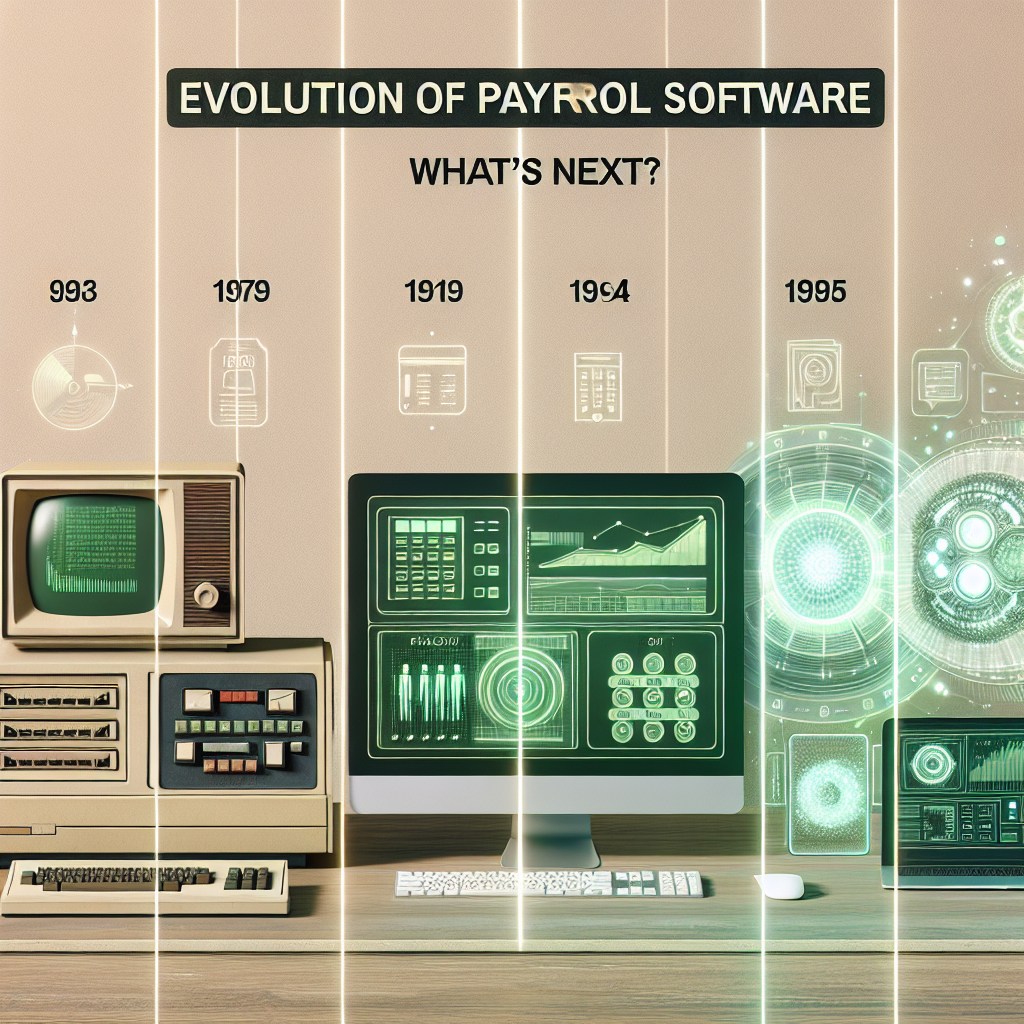The landscape of payroll software has dramatically transformed over the years, evolving from rudimentary spreadsheets to sophisticated cloud-based solutions. Today, businesses of all sizes rely on payroll software to manage the complexities of employee compensation, tax compliance, and workforce management. But as technology continues to advance, one must wonder: what’s next for payroll software? Let’s explore the evolution of payroll systems and what the future holds.
A Brief History of Payroll Software
The Early Days: Manual Processing
In the early days, payroll was a labor-intensive process. Companies relied heavily on paper records and manual calculations. The risk of human error was high, which often led to payment delays and compliance issues. Small businesses typically managed payroll in-house, while larger companies sometimes employed dedicated payroll clerks.
The Advent of Computerized Payroll Systems
The introduction of computers in the late 20th century marked a turning point for payroll management. Businesses began using software to automate calculations, minimizing errors and speeding up the process. Early payroll systems were often standalone solutions, requiring significant IT resources for installation and maintenance.
The Growth of Cloud-Based Solutions
The 2000s heralded the era of cloud computing, enabling real-time data access and collaboration. Payroll software transitioned from on-premises solutions to cloud-based platforms. This move not only improved efficiency but also democratized access to sophisticated payroll tools for small and medium-sized enterprises (SMEs).
Current Trends in Payroll Software
Integration with HR Systems
Today’s payroll software often integrates seamlessly with human resources (HR) systems. This integration streamlines data sharing, enabling businesses to maintain accurate employee records and ensure compliance with labor laws. The convergence of HR and payroll has helped organizations become more efficient and responsive to employee needs.
Mobile Accessibility
With the rise of remote work, mobile accessibility has become essential. Modern payroll systems allow employees to access their pay stubs, manage withholding, and request leave right from their smartphones. Companies that embrace mobile technology not only enhance employee satisfaction but also create a more agile workforce.
Real-Time Payroll Processing
Gone are the days of waiting for the end of the pay cycle. Today’s payroll systems offer real-time processing, allowing employees to receive their wages as soon as they are earned. This “on-demand” payroll feature has gained popularity, especially among gig economy workers who value flexibility.
What’s Next? The Future of Payroll Software
Enhanced Automation and AI
As artificial intelligence (AI) continues to gain traction, payroll software is set to become even more automated. AI algorithms can assist in predictive analytics, helping companies forecast payroll budgets based on historical data. Chatbots may also be used to answer employee queries, reducing administrative burdens.
Increased Focus on Compliance
As labor laws evolve, ensuring compliance will be a top priority for payroll software developers. Future systems will likely incorporate advanced compliance features that automatically update in response to regulatory changes, reducing the risk of penalties for businesses.
Employee Wellness Programs
In the coming years, payroll software will likely integrate wellness programs as part of compensation packages. Features such as financial health assessments or budgeting tools could transform payroll from a purely transactional process into a holistic employee experience that promotes well-being.
Blockchain Technology
Blockchain technology, known for its security and transparency, may revolutionize payroll processing by providing a tamper-proof record of transactions. This could significantly reduce the risk of fraud and enhance trust between employers and employees.
The Human Element in Payroll
Despite the technological advancements, it is essential to remember that payroll is more than just numbers. It reflects the company’s values and its commitment to its workforce. Humanizing payroll software involves focusing on employee experience, ensuring timely and accurate payments, and providing support when needed.
Balancing Technology with Empathy
As businesses adopt advanced payroll technologies, maintaining a balance between automation and personal touch is crucial. Support channels—be it chat support, live agents, or knowledge bases—should remain accessible to address employee concerns and enhance the payroll experience.
Conclusion: Embracing the Future
The evolution of payroll software is a testament to the progressive interplay of technology and human needs. As we look to the future, we will likely see payroll systems that combine automation, compliance, employee wellness, and a human-centric approach to create a more effective and responsive payroll experience. Businesses that harness these advancements will not only streamline their processes but also build a stronger and more satisfied workforce.
In a world where change is constant, embracing the evolution of payroll software is not just about keeping up; it’s about leading the way toward a better workplace for everyone.


